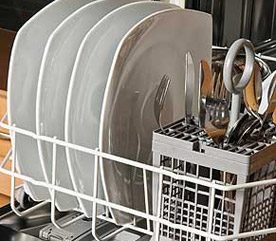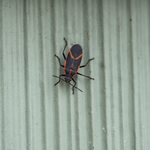Healthy Home Checkup
We may not be able to have a huge impact on the outdoor air we inhale, but we can control the quality of the air under our own roofs. Breathe easier by checking the following hot spots and implementing the suggested changes for making yours a healthier home.

Front Door
Use a sturdy doormat to scrape off dirt from shoes before it gets tracked in. Place the mat vertically instead of horizontally so that everyone who enters will have to step on it several times.
Lead Paint
Over time, ingesting or inhaling dust and flakes from lead-based paint can cause brain damage. If you suspect that the paint in your home contains lead, have it tested. If it contains lead, don’t remove it yourself. Hire a specialist, or cover it with wallpaper or paneling.
Tightly Closed Windows
Keep a couple of windows cracked open year-round to remove fumes released by harsh cleaning products and chemical-laden furnishings, reduce mold-breeding moisture, and lower levels of unsafe gases. If you have allergies, consider buying a High Efficiency Particulate Arresting (HEPA) air cleanser. For tobacco smoke, consider an air purifier that uses an activated carbon filter.
Pressed Wood Products
Construction materials, shelving, furniture, paneling, cabinets, and other products made with these woods are assembled using urea-formaldehyde glues and adhesives, deemed probable human carcinogens. Formaldehyde irritates the respiratory tract and can cause or exacerbate allergic reactions.
Opt for furniture and cabinetry made with hardwood or “exterior grade” pressed wood, which contains phenol resins, not urea resins, so the fumes they emit are less troublesome. Or opt for metal shelves and cabinets. Open the windows wide after bringing home new furnishings that might contain formaldehyde, especially if you put the new items in the bedroom.
Air Conditioners
Both central and window air-conditioning units can harbor mold, especially when they’re not being used. Empty water trays and change filters often.
Closets
Patronize dry cleaners that minimize their use of perchloroethylene, a carcinogenic solvent also found in spot removers. Also, remove the plastic bags from newly dry-cleaned clothes before you leave the store so that the garments can air out on the way home. And keep your wool garments free of holes without mothballs, which emit toxic vapors. Instead, store woolens in a cedar-lined closet or with cedar chips or aromatic herbs, such as eucalyptus or bay leaf.
Wall-to-Wall Carpeting
It can be a significant source of indoor pollution, trapping dust mites and dangerous fumes, particularly if anyone in the house smokes. These harmful agents are later released into the air. Carpeting also can be a hideaway for mold and mildew. Synthetic carpets may emit toxic volatile organic compounds (VOCs). The healthier alternative: hardwood, linoleum, ceramic tile, or any other hard-surface flooring.
Gas Stove
Install an exhaust fan-preferably one that vents to the outdoors-over the stove to reduce exposure to combustion by-products, including carbon monoxide. Check the flame and pilot lights regularly-the flames should be blue, with a slight yellow tip at most. If the flame is too yellow or orange, have the utility company adjust it. If you have a gas stove, be sure to install a carbon monoxide detector in your home.
Sink or Toilet
Leaky fixtures can increase indoor humidity, promoting the growth of black mold (Stachybotrys chartarum), identified as a health threat only in the last decade. Black mold isn’t the stuff that grows on ceramic tile or the grouting in your shower, but it may grow on walls, ceilings, ceiling tiles, and carpets. In adults, it can cause fatigue as well as symptoms affecting the eyes, skin, lungs, and nervous system. Exposure to this mold has also been linked with fatal cases of bleeding lungs in infants. To keep moisture from building up, install and regularly use exhaust fans in all bathrooms, as well as in basements and kitchens, and fix water leaks promptly.
Showers, Dishwashers, and Washing Machines
These appliances strip chemicals from the water and spew them into the air via heat and spray. University of Texas researchers found dishwashers to be among the worst offenders, releasing numerous chemicals including chlorine. Wait until the dishwasher has completely cooled before you open it. And turn on the exhaust fan or open a window during your bath or shower and for at least 10 minutes afterward.
Other research found that fecal bacteria and viruses, including hepatitis A and E. coli. can survive the wash cycle and possibly infect you when you handle wet laundry. Minimize the risk by adding bleach to the first load to sanitize your machine. Wash underwear separately from other clothes using the hottest water setting.



